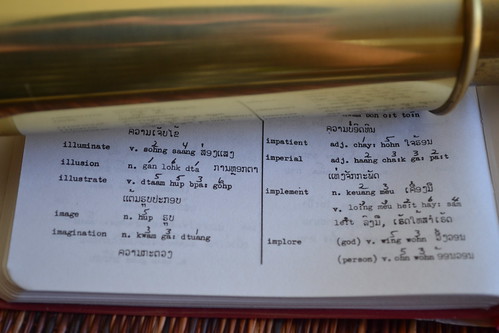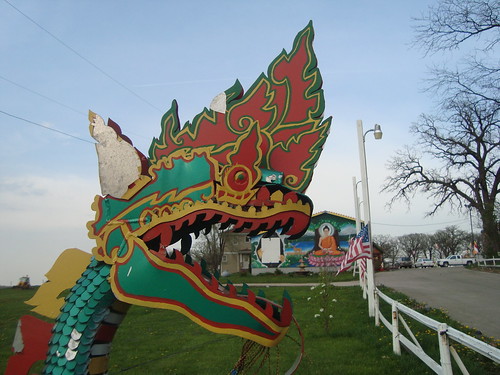This news is good because it's still a few more weeks before "Full Metal Hanuman" is ready for prime time. But that's a different story. This poem could also have become "A Stainless Steel Ratsi" but that's a more esoteric Lao science fiction in-joke. I'm happy with this poem because it's not everyday one gets to pay homage to the work of the late Harry Harrison, Phillip K. Dick, Lao culture and the Southeast Asian zodiac all in one poem. I'll be excited to see it come out in the final version, which will also be Lontar's inaugural issue.
I still really have to figure out how I'd do a Lao steampunk speculative poem, especially one with Lovecraftian elements. But all in good time.
Harry Harrison had a significant impact on my work, primarily through his Stainless Steel Rat series, followed by Make Room! Make Room! and the satire Bill, the Galactic Hero. Among the key things I still try to apply from him as a writer is conscientiousness about how easy you make it for your translators internationally even as you have fun with language. Of course, several of those who've been translating my poetry over the last few years may have different perspective on that.

If you haven't checked out Stainless Steel Rat, the key take-away theme is:
"We must be as stealthy as rats in the wainscoting of their society. It was easier in the old days, of course, and society had more rats when the rules were looser, just as old wooden buildings have more rats than concrete buildings. But there are rats in the building now as well. Now that society is all ferrocrete and stainless steel there are fewer gaps in the joints. It takes a very smart rat indeed to find these openings. Only a stainless steel rat can be at home in this environment."I often wonder how other Lao like the stories and what it would be like if they were writing something along that vein.

In the Lao tradition, a nak is a term for a young monk that comes from a legend of a nak who wanted to be a disciple of the Buddha, so he disguised himself as a human. The nak accidentally fell asleep and turned back into his true form, terrifying everyone. He was told he could no longer be a disciple, but because of his great faith, he was granted his wish that young monks taking their vows would be called nak.
In the glossary of On The Other Side Of The Eye in 2007, I explained that a nak is "Sometimes synonymous with Naga. Typically depicted as a
many-headed giant serpent, as a river creature, and sometimes as
a subterranean being. Nak are believed to help the Lao during
wars, floods and are associated with fertility. Some say the Lao are
descendants of a giant Nak living in the Mekong. To some, Nak
are snake deities who converted to Buddhism and now protect the
Buddhist Dharma. In art, they appear on the balustrades of temple
causeways and platforms ("naga bridges"), personifying the
rainbow, bridging the earthly and celestial worlds."
Two excellent resources to learn more about the Nak are the recently published books The Enduring Sacred Landscapes of the Naga by the Ngaosrivathanas and Naga Cities of the Mekong by Martin Stuart Fox. Keep an eye out for them.
Two excellent resources to learn more about the Nak are the recently published books The Enduring Sacred Landscapes of the Naga by the Ngaosrivathanas and Naga Cities of the Mekong by Martin Stuart Fox. Keep an eye out for them.
No comments:
Post a Comment